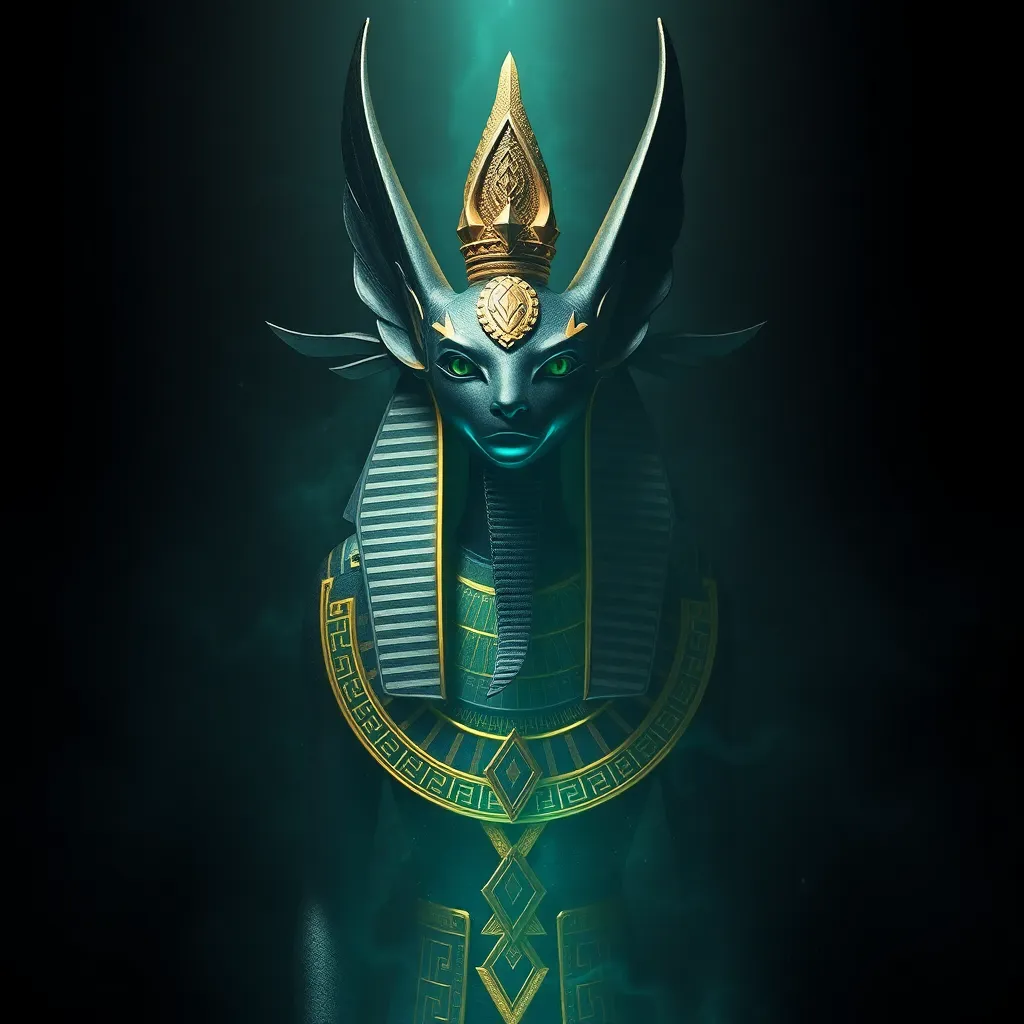Anubis: A Powerful Symbol of Transition, Change, and Renewal
I. Introduction
Anubis, an ancient Egyptian deity, holds a significant place in the pantheon of Egyptian mythology. Often depicted as a jackal or a man with a jackal’s head, Anubis is primarily associated with the afterlife and the rituals surrounding death. His role embodies the profound themes of transition, change, and renewal—concepts that resonate deeply within the human experience. This article aims to delve into the multifaceted symbolism of Anubis, exploring how he represents these themes both in ancient contexts and contemporary life.
II. Historical Context of Anubis
Anubis’s origins can be traced back to the earliest periods of Egyptian history, where he was revered as the god of mummification and the protector of the dead. Over time, his role evolved, becoming central to funerary practices and the beliefs surrounding the afterlife. Anubis was often invoked during the mummification process, ensuring that the deceased were properly prepared for their journey into the afterlife.
In ancient Egyptian art and literature, Anubis is frequently depicted overseeing burial rites, symbolizing his guardianship over the dead. His presence in tomb paintings and inscriptions highlights the importance of his role in guiding souls through the complex transition from life to death.
III. Iconography of Anubis
Anubis is characterized by his striking physical appearance. He is typically shown as a black jackal or a man with a jackal’s head, representing both the animal’s association with the grave and the color black, which symbolizes fertility and rebirth. His iconography is rich with meaning, often adorned with symbols that enhance his role as a guide in the afterlife.
- Jackal: The jackal is a scavenger often found in cemeteries, reinforcing Anubis’s connection to death and the underworld.
- Black Color: The color black represents the fertile soil of the Nile, symbolizing regeneration and the cycle of life.
- Staff and Ankh: Anubis is often depicted holding a staff or ankh, symbols of authority and life, respectively.
Artistic depictions of Anubis serve to convey the significance of transition between life and death, highlighting his role as a protector and guide for souls navigating the afterlife.
IV. Anubis as a Guide in the Afterlife
One of the most critical roles Anubis plays in Egyptian mythology is during the weighing of the heart ceremony. This ceremony, which takes place in the Hall of Judgment, is where the souls of the deceased are judged. Anubis is depicted as weighing the heart of the deceased against the feather of Ma’at, the goddess of truth and justice.
- Judgment: The heart must be lighter than the feather for the soul to pass into the afterlife; this symbolizes the moral transition that every individual must face.
- Renewal: The successful judgment represents not only the continuation of the soul’s journey but also the potential for renewal and rebirth in the afterlife.
Through this powerful symbolism, Anubis embodies the duality of judgment and mercy, reflecting the complexities of moral transition and the hope of renewal beyond death.
V. Anubis and Personal Transformation
Beyond his role in the afterlife, Anubis serves as a potent metaphor for personal change and growth. His journey from the protector of the dead to a guardian of souls speaks to the transformative power of facing one’s fears and embracing change. In this way, Anubis’s myths offer valuable lessons applicable to modern life.
- Metaphor for Change: Just as Anubis guides souls through the afterlife, individuals can find guidance in their own transitions, embracing change as a natural part of life.
- Lessons from Myths: Anubis’s stories encourage self-reflection and personal accountability, reminding us of the importance of living a life aligned with our values.
- Self-Discovery: The journey of self-discovery can be likened to the path of the soul in the afterlife, where confronting challenges leads to renewal and growth.
VI. Anubis in Modern Culture
The influence of Anubis extends into contemporary art, literature, and media. His striking image and rich symbolism have captivated modern audiences, leading to a resurgence of interest in ancient Egyptian spirituality. Anubis has become a popular figure in various forms of artistic expression, often representing themes of transformation and the mysteries of the afterlife.
- Artistic Influence: Anubis frequently appears in visual art, tattoos, and graphic novels, symbolizing the allure of ancient mythology.
- Literature and Media: Films and books often draw upon Anubis’s character to explore themes of death and transition, making him a relatable figure for contemporary audiences.
- Spiritual Symbolism: Anubis’s symbolism resonates with those seeking personal transformation, as he embodies the journey through darkness into light.
VII. Practices and Rituals Inspired by Anubis
Modern interpretations of ancient rituals connected to Anubis have emerged, allowing individuals to engage with his symbolism in personal and spiritual contexts. These practices often focus on themes of transition and renewal, reflecting Anubis’s enduring legacy.
- Contemporary Rituals: Individuals may create rituals that honor Anubis during significant life transitions, such as graduations, marriages, or personal challenges.
- Spiritual Practices: Anubis is incorporated into modern spiritual practices, such as meditation and visualization, which emphasize personal healing and transformation.
- Symbolic Transition: Rituals inspired by Anubis symbolize the importance of acknowledging change and embracing the journey of renewal.
VIII. Conclusion
In conclusion, Anubis stands as a powerful symbol of transition, change, and renewal, embodying the complexities of the human experience. His significance in ancient Egyptian mythology continues to resonate today, reminding us of the importance of embracing change and the potential for growth that lies within every transition. As we reflect on the enduring legacy of Anubis, we are encouraged to view our own journeys through the lens of his teachings, recognizing that each change we encounter can lead to renewal and transformation.



